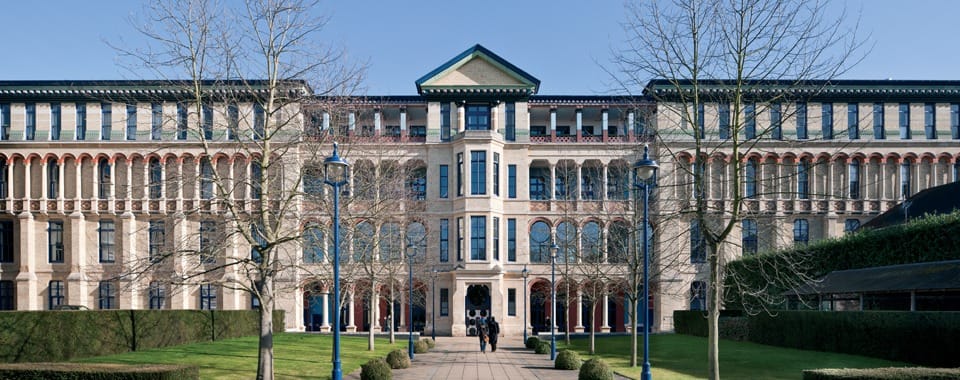
Quite simply a firm’s business model is the combination of its revenue model and cost structure. By extension, innovation in a business model involves systemic change to how the firm brings in revenue and how it incurs cost.
An example of a business model innovation that shook the world was Amazon.com. On the revenue side, Amazon introduced a new model from that of existing bricks and mortar retailers by bringing a far larger assortment of books (and music) to a far larger set of consumers worldwide. The Amazon model cleverly used the Internet to deliver a value proposition that provided access to a potentially infinite selection at potentially all hours of the day and night, every day of the year. In particular, the model took advantage of the so-called long tail, i.e., the large number of consumers who are in the market for rare or infrequently bought books. Crucially, these were precisely the customers that traditional bricks and mortar retailers could not and did not cater to because of the physical limits on the number of books that can be housed within the confines of a store.
[soundcloud id=’36920941′]
On the cost side, Amazon realised huge savings in two ways. First, by not having to maintain a physical presence on high streets in cities around the world; the Internet allowed the company to operate a virtual store that was instantly and perpetually accessible to anyone anywhere in the world who had access to the World Wide Web. And second, by not having to keep a physical inventory of all the many books that their customers were likely to wish to purchase; again the Internet made it possible for Amazon to simply order books when they were purchased by customers.
While it is easy to understand (in retrospect) Amazon’s revolutionary business model innovation, what was and still is far harder to do is for existing bricks and mortar retailers to replicate this innovation. Indeed, Amazon’s big bricks and mortar competitors – Barnes and Noble, and Borders – tried hard for some time to replicate Amazon’s success in the online world and failed. Indeed, it wasn’t lack of trying that explains their failure. Rather, it was the fact that copying Amazon’s model would have required them to change their entire way of doing business: how they made revenues and how they incurred costs. Changing the revenue structure would have involved changing how they interacted with customers; the very nature of the service they offered, and how they delivered, priced and promoted it to customers. Changing their cost structure would have involved systemic change to their operations as well; how they worked with suppliers and so on.
Undergoing any change, particularly systemic change, is hard for any firm to do. But it is particularly hard for incumbent firms who already have a quite different system in place, and moreover one that has been successful by its very definition. Managers within the firm, resisting change because it threatens them or because it is hard to do, may rightly ask: why should we change something that has worked so well for us, and continues to do so? In the end such logic may well win the day, making change even harder to bring about, until it is too late and the new business model, introduced by the entrant, wins the day and makes obsolete the old business model of the incumbents, destroying them in turn.
This is where the crisis of a recession can play a crucial part in galvanising change. Managers who back change within the firm can use the tougher circumstances to argue for and bring about change in the firm’s business model. To see how this has been done, it’s useful to consider another example of revolutionary business model innovation, this one not by a new entrant like Amazon but by a hardy old incumbent: Procter and Gamble.
By the year 2000, P&G was in trouble. Despite being a huge R&D organisation with $1.8 billion in R&D expenses, it was facing stagnation of new R&D with only 35% of its new products meeting their objectives. P&G was also facing increasing costs: the cost of maintaining the brand Always went from $10 million in the 80s to upward of $30 million by 2000. Thus the time was ripe for change, and systemic change at that. Using the crisis, P&G’s new CEO A.G. Lafley teamed up with senior executives to completely revamp the firm’s innovation-related business model. Over the next few years, P&G went from doing classic R&D with all its product ideas developed in-house to being what it called a C&D or Connect and Develop organisation with up to 52% of its products coming from external sources such as customers, suppliers and even competitors. This dramatic change in the cost and revenue structure of the firm’s innovation model had a dramatic impact on its performance: in five years, it reduced its R&D costs (from 4.8% of sales in 2000 to 3.4% in 2005) while simultaneously increasing its new product success (it launched five of the top ten consumer products in the US in 2005). Thus, not only had its R&D productivity increased by 60% but it had also doubled its share price in the process.
Recessions are not simply bad times that call for cost cutting alone. Rather, they offer opportunities for innovation and systemic change, change that can make all the difference to the long term success of a firm. As someone once said: a crisis is a terrible thing to waste. Managers, especially those in currently successful firms facing challenges from hungry and innovative entrants, would do well to take note of this. If they do so, they could stop worrying about recession and learn to love innovation instead.
This opinion piece by Professor Jaideep Prabhu was first printed in The Financial Express, India, 27 January 2009.


